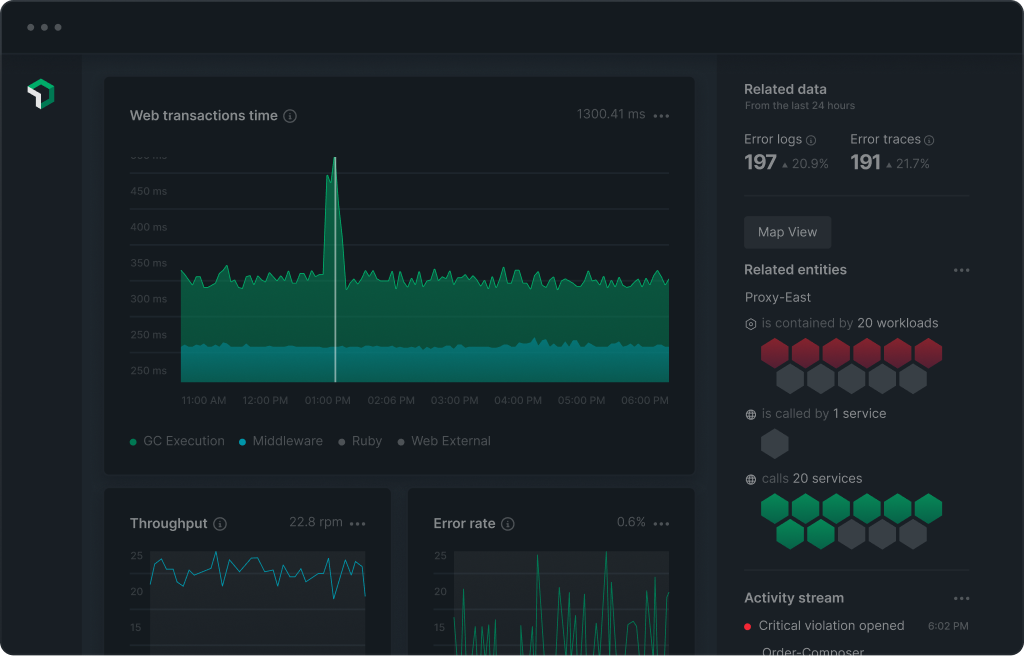Pour le moment, cette page n'est disponible qu'en anglais.
Quickstart
The Network Flow Devices quickstart provides dashboards and alerts designed to give you deeper insights into your flow data.
Use this quickstart together with New Relic's Network Performance Monitoring (NPM) feature to visualize how users are consuming your bandwidth.
(This quickstart contains Custom Visualizations which require Full User permissions to access)
Authors
Support
BUILT BY VERIFIED
Need help? Visit our Support Center or check out our community forum, the Explorers Hub.
Need help? Visit our Support Center or check out our community forum, the Explorers Hub.
